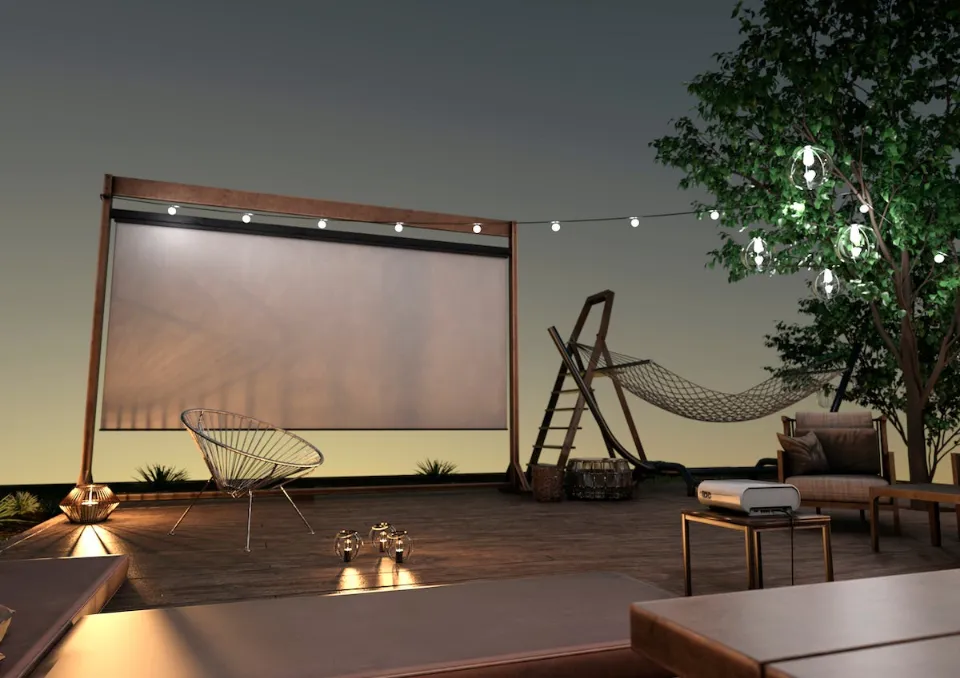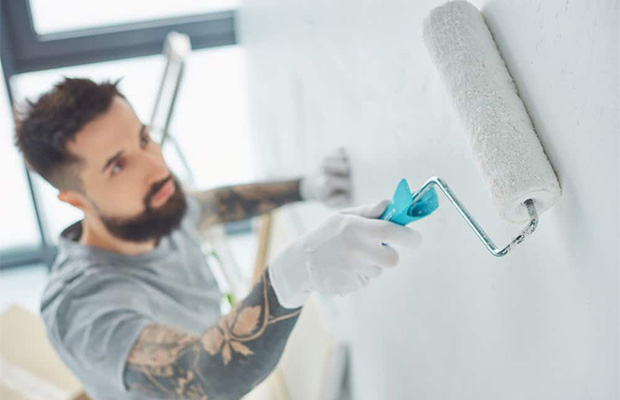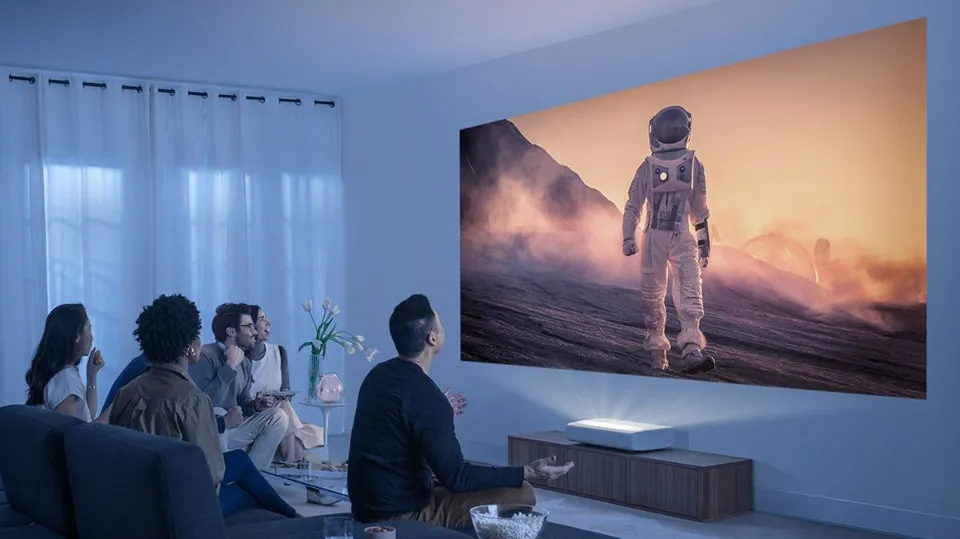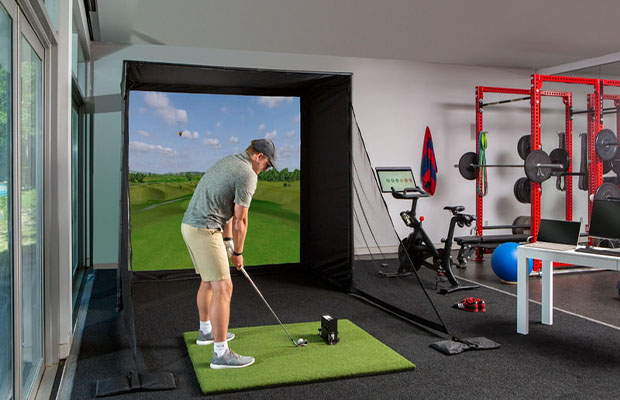If you are interested in making DIY projector screens, you’ve come to the right place.
Making a custom projector screen yourself is completely achievable. Building your screen is like painting a canvas; it’s a clean slate.
There are several ways to make a DIY projector screen, here are the few proven to show content better.
Get started on the right foot by reading how to make a projector screen for your specific needs.
Table of Contents
DIY Projector Screen Options
There are many types of projector screens. However, the most common ones are curtain screens and painted screens.
The painted screen is the most popular, dependable, and straightforward option mentioned above. Therefore, there might not be a better option if you don’t want to do anything or spend a lot of money. Let’s find out how you can make it home;
1. DIY Painted Screen
The only materials required to create a painted screen are tape, a fresh coat of white-gray or light gray paint, a clean brush, or a small paint roller.
- Take a look around: The projector must first be installed somewhere where it will function best. A smooth and even wall is essential when using it as a projector. You wouldn’t benefit from it if it didn’t.
- Turn on the projector to find a spot: Turn on the projector once it has been fixed in place. The projector will put light on the wall, mark the area where the projector places its light on
- Use tape to determine the length and width of screen: Make borders using the tape, it would prevent the mess and help you make a perfect painted projector screen.
- Prepare the surface: Apply primer it will allow the paint to adhere and last long
- Use a clean brush and new white-gray or light gray paint. Both of the shades are equally good. So, pick whichever shade you can get without too much trouble.
- Paint: Next, precisely paint the designated area. If one coat does not seem to be enough, be prepared to apply additional coats. To avoid the image on the wall from being distorted, make sure the paint is applied evenly. So be extra careful, if you think you can paint evenly, get it done by a professional
- Let the paint dry: Leave the newly painted area to dry
- Check and enjoy: Once the painted area is completely dried, turn on the projector again, play, and enjoy
2. DIY Wrapping Paper Projector Screen
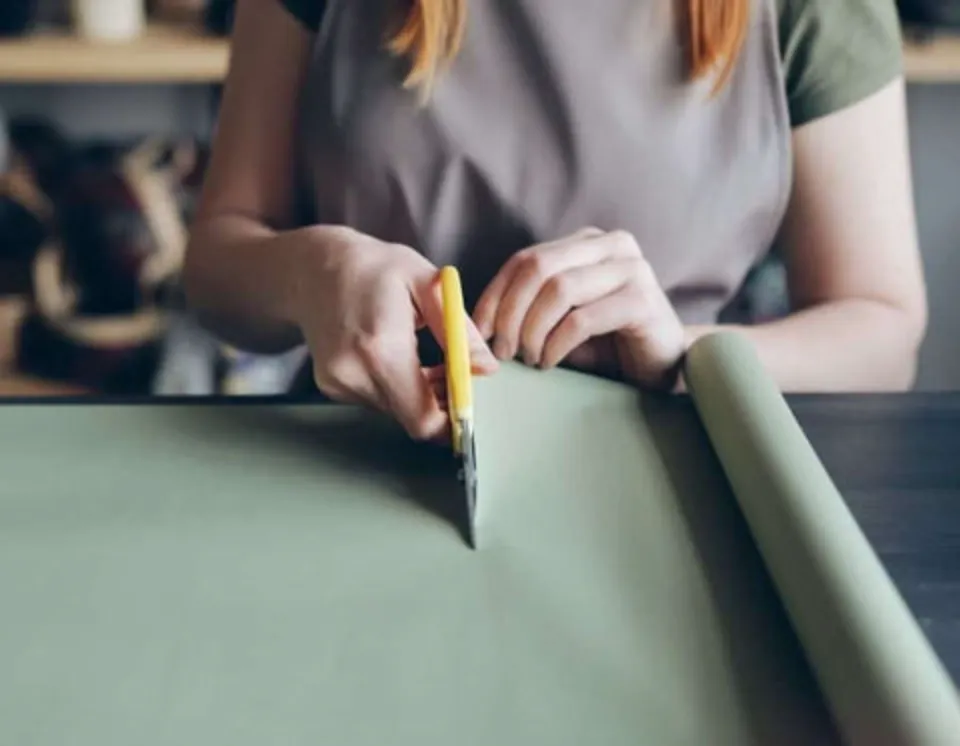
If none of the aforementioned suggestions have particularly impressed you, you could also try making a projector screen on your own using premium wrapping paper.
Wrapping paper that is thick and sturdy, a wooden frame, and tape are required to make a wrapping paper projector screen.
- Calculate the length and width of the suitable projector screen size: Get a wooden frame built and be aware of the dimensions of your projector screen.
- Apply wrapping paper to make the screen: Now take the thick and sturdy wrapping paper and tape it to the wooden frame
- Your projector screen is done.
The wrapping sheet projector screen is not as durable as the other projector screens. Because even the smallest wrinkle could distort the image, you must be extremely careful. The wrapping sheet is reasonably priced, though, so you can easily buy a new one if it becomes wrinkled or otherwise damaged and keep watching your favorite films in succession.
3. DIY Curtain Or Fabric Projector Screen
A fabric screen or curtain is a good choice if you don’t want to damage the wall. It’s crucial to emphasize that you don’t have to convert a curtain into a screen; a cloth screen would suffice.
This is the main justification for calling it a fabric screen. Here’s how you can craft it to perfection;
- Have necessary material: Take a white sheet, curtain backing, white canvas, or a thick black cloth, whatever is feasible for you.
- Cut the fabric: Cut the fabric now as needed for your desired screen size.
- Hang it up: The screen backdrop should be hung as soon as the fabric has been cut to the specifications. The clothesline is the only feasible alternative. It is a cheap and simple setup. Since you are working with a blackout cloth, use the clothespin to keep the panels in place.
- Fasten it up: Fasten the panels on the clothesline removing all the creases
You can stop if you’re only going to use it for indoor entertainment. However, if it’s for outdoor use (which usually it is for), there are two more steps;
- Have a PVC pipe: Cut a piece of PVC pipe using the measurements from the curtain screen’s bottom as a guide.
- Attach it to the screen: To keep the screen from being impacted by the breeze, attach the PVC pipe to the bottom of the screen.
- Congratulations! You did it: It’s finished, the curtain screen. Washing the fabric projector screen is simple.
Sincere to say, there are other options besides painted and curtain screens. Numerous other ideas also come to mind for movie fans.
4. DIY Projector Screen Using Picture Backdrop
You might not know that the picture backdrop can also make a great projector screen as well.
The picture’s backdrop’s best feature is how strong, portable, and long-lasting it is.
5. DIY Curved Projector Screen
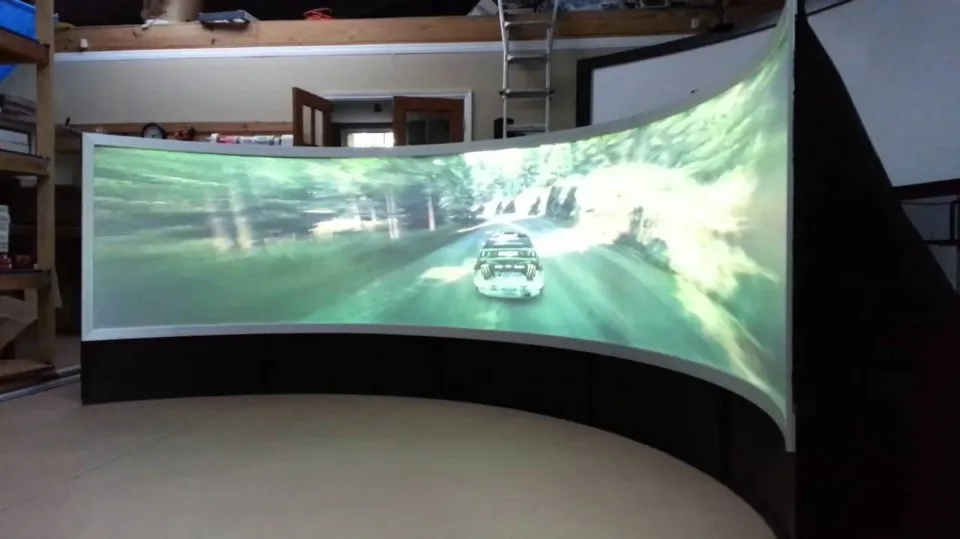
The curved projector screen is also not that hard to craft. You will need drywall screws, Bondo, sandpaper, at least 1 liter of primer, 2 pieces of 4mm MDF, and 2 liters of S1500-N paint to complete the project.
- Find the suitable throw distance: Calculate the throw distance.
- Select the spot: Find a place where you want your projector screen to install.
- Resize the MDF sheet: The time has come to resize the MDF sheets to your specifications once you are certain of the throw distance and the location where your projector screen will be placed.
- Bend the sheet taking help: With assistance, bend the MDF sheet and check that all of the sides are level. The sides must be level with the others or you won’t be able to stop the screen from sagging from the middle.
- Put the sheet on the wall: In order to ensure that the MDF sheets meet in the center of the screen, place the sheets on the wall and secure them.
- Do the finishing: Do some bonding and sanding.
- Paint: Use a brush or paint roller to apply an even coat of paint, then let the screen dry.
- Apply another coat of paint: Apply a second coat of paint after the first one has dried and allow it to dry as well.
You are done! There your curved screen is ready, when the screen is dry you can use it to watch movies like you would have watched on the real projector screen
6. DIY Projector Screen Using Window Shades
Though the shades projector screen is not a very popular idea. But you can also use the shades as a decent projector screen. To make a DIY projector screen using shades, here’s what you have to do;
- Have the basic material to craft a screen: Grab a white or light gray roll-down shade. Make sure the roll-down window coverings do not overlap by 6″ when you buy them. Otherwise, the light will bleed through the sides and you would end up wasting $25 to $50 spent on the shades.
- Install: Hang the roll-down shades where you want your projector screen to be
- There the DIY window shade projector screen is done.
Why Should You Make Your Own Screen?
Installing a DIY project screen comes with a number of benefits.
Cheaper Cost
Making your own projector screens will save you hundreds of dollars that you can invest in a better projector or improved sound system. Making your own projector screens is significantly less expensive than purchasing one.
Customization
DIY screens allow you to completely tailor the screen to your needs and the specifications of the room.
Less Repair Expenses
Your screen maintenance costs will be reduced because you can handle any necessary fixes or tweaks.
In the long run, installing a DIY projection screen allows you to save money and customize the screen to your home theater’s precise room requirements without sacrificing the quality of the image being projected onto it.
Also Read: Do You Need A Projector Screen?
Final Words on DIY Projector Screens
Use raw material for a DIY borderless projector screen or to build a fixed frame screen lined with black felt tape. Stretch a finished-edge screen to a wall or frame that you already have. To make installation simpler, use a wall-hanging or freestanding kit.
You’ll have a screen setup you’ll love in no time, whatever you choose to do.
Related Post: What Can I Use As A Projector Screen?

